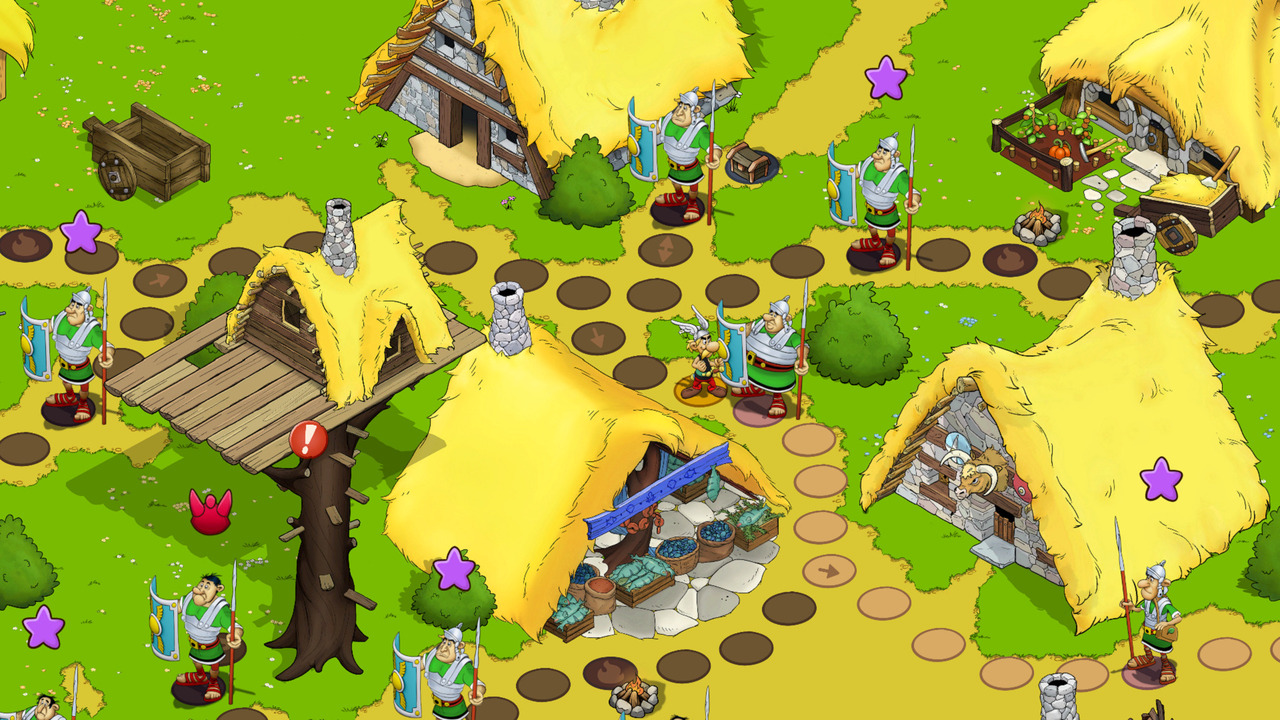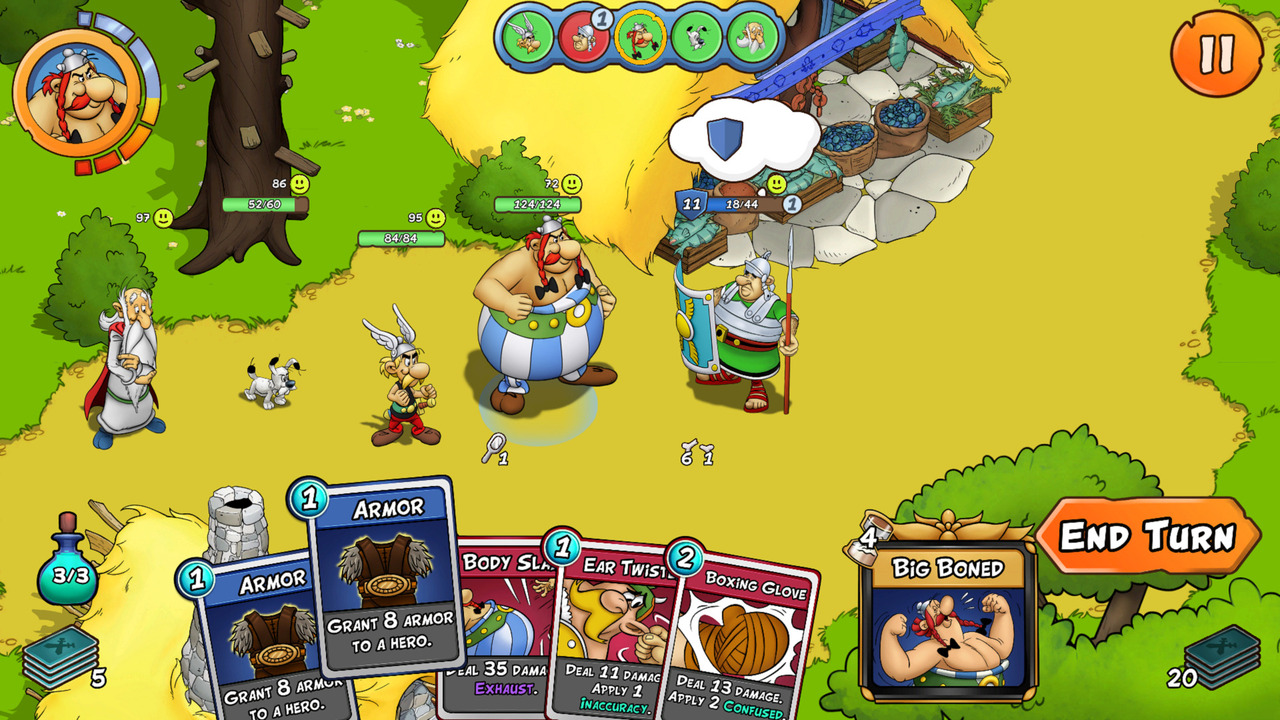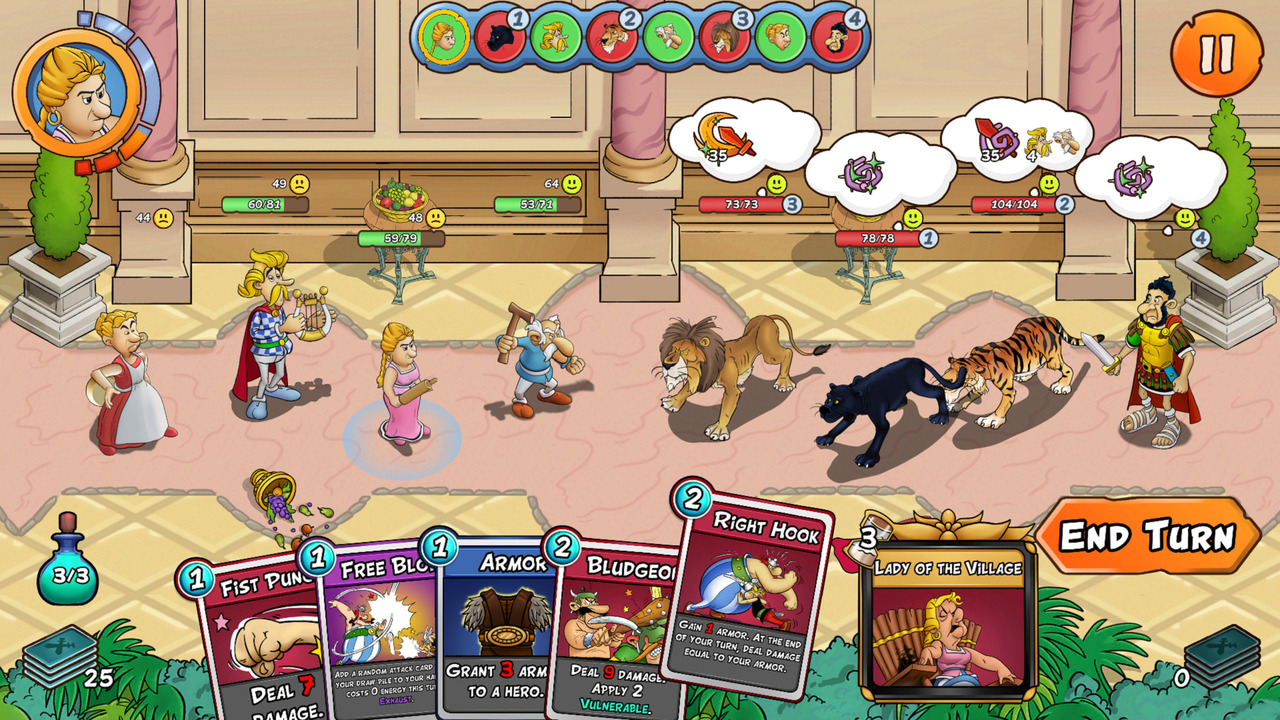I grew up on Asterix & Obelix, Lucky Luke, and many more. So when this title dropped in our digital inbox – I installed it quicker than you can say Vitalstatistix three times in a row. It’s time to drink some magic potion and jump in.
Let’s quickly recap the story for those unfamiliar with Asterix & Obelix. The year is 50 BC. The Romans entirely occupied Gaul. Well, not entirely… One small village of indomitable Gauls still holds out against the invaders. Life is not easy for the Roman legionaries who garrison the fortified camps of Totorum, Aquarium, Laudanum, and Compendium… The series follows the adventures of a village of Gauls as they resist Roman occupation in 50 BC. They use a magic potion brewed by their druid Getafix (Panoramix in French), temporarily giving the recipient superhuman strength. The protagonists, the title character Asterix and his friend Obelix have various adventures. The “-ix” ending of both names (as well as all the other pseudo-Gaulish “-ix” names in the series) alludes to the “-rix” suffix (meaning “king,” like “-rex” in Latin) present in the names of many real Gaulish chieftains such as Vercingetorix, Orgetorix, and Dumnorix.
Gameplay
I was a bit skeptical since most comic book-to-game games aren’t that … great. The Zorro game was okay, the Bluecoats game was not, and Asterix & Obelix Heroes is in the middle. The main idea behind Asterix & Obelix Heroes is that you use your cards instead of your fists. Most Asterix & Obelix games from the forgotten days focused on fighting instead of Slay the Spire deckbuilding gameplay. Each card has specific characteristics, from inflicting heavy damage with a menhir to healing a hero with one of Getafix’s potions! It’s up to you to adapt to each round, making the right choices so you can foil the plans of the crazy Romans.
You probably noticed by the screenshots that Asterix & Obelix Heroes would work very well on a phone screen (graphic-wise). This is not strange since GameXcite, the German developer of this game, worked on two Asterix & Obelix games for iOS and Android. The style has changed significantly since the original artist died in 2020, but this does not do the series justice. Most of the enemies are semi-recognizable from the golden years of Asterix, but the more famous enemies are nowhere to be found. Sadly, this makes the game overall, in both gameplay and artwise, very bland.
To add to the blandness, a bit is how the decks work. You enter a region with four heroes and two decks. While beating up Romans and other enemies, you unlocked new cards, heroes, food, and gold to buy and upgrade your decks and heroes. Each battle is played out with a handful of cards, in which you pick new cards to damage or deliver a status effect to the enemy. In games like Slay the Spire, deckbuilding is a big part of the gameplay, but in Asterix & Obelix, the deckbuilding starts after beating three regions. This makes the gameplay, in general, numbing and makes the grind less rewarding, especially since the unlocked characters are very low-leveled, which means doing re-runs of the older regions repeatedly.
Conclusion
Asterix & Obelix Heroes was a better fit on the mobile consoles than on the Nintendo Switch or PC. It would have had a better price point and a better reception in general. It feels like a mobile port, but it is not – so I cannot justify the price point and gameplay. This feels wrong and not worth my time on the consoles, even for the most die-hard fans. I would have picked it up on my phone, probably as a change of pace from Slay the Spire. There’s nothing to get your magic potion worked up over.





